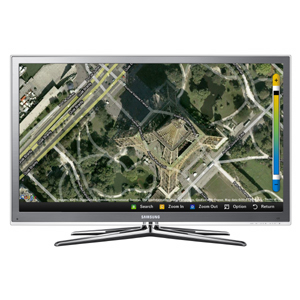Committing solely to wireless technology is ‘a recipe for failure’ for integrators. Here are the four home network infrastructure options to consider for every project.
Commitment certainly has its place in this world, like in relation to spouses or sports teams. But over-committing to a singular technology? That can be a risky move.
While Wi-Fi is the technology buzzword, particularly with homeowners, those of us tasked with actually fitting the myriad of modern electronics and digital services into a high-functioning, seamlessly networked home must understand the whole landscape.
What makes the current 802.11 Wi-Fi standards so alluring is the convenience of its mobility, ubiquity, and interoperability between so many devices. While the appeal is that Wi-Fi is seemingly in everything—our computers and smartphones, our televisions and cameras—that is also part of the problem. The 2.4GHz spectrum is being shared by all of your Wi-Fi devices, all of your neighbors’ Wi-Fi devices, and even proprietary devices such as baby monitors.
That’s quite a load. When the physical limitations of RF bands are strained or exceeded, it reduces the quality of service for every device, and consequently every person relying on them.
Those limitations are the source of audio drop offs, buffering delays or reduced definition during a streaming movie, and latency in competitive multiplayer video games. These nuisances undermine the intent of quick, reliable access to content, which is the very point of incorporating many technologies into the home. Your customers deserve better than that.
Part of the solution can be to use the 5GHz band for 802.11n or the upcoming 802.11ac standard to help alleviate some bandwidth traffic, but these options are not without their own limitations. First, the 5GHz band has less range than 2.4GHz and struggles to pass through walls and other building obstacles. Second, many devices today only communicate on 2.4GHz. While additional devices are expected to be dual band, 2.4GHz will continue to be the most used band in the near future.
So, truthfully, the real solution is recognizing wireless is not the be all, end all. And that’s okay. What a network needs to be about is uninterrupted access and content, and it falls on the installer’s shoulders to ensure the best user-experience.
Networking a home with a strong wired backbone remains the best practice to achieve top performance. Should an existing home have only a limited wired Ethernet network, a coax network using the MoCA standard, or a powerline network using the HomePlug AV standard, may be able to bridge the Ethernet service to the desired destination. Both of these wired technologies are affordable and easy-to-install networking alternatives that can relieve the Wi-Fi network of its highest bandwidth responsibilities. This will ensure superior performance for streaming and surfing on mobile and smart devices.
At the end of the day, all customers really care about is streaming that movie on Netflix with a pristine picture, synced audio, and no interruptions. Committing solely to a specific technology is a recipe for failure. Employing multiple technologies to build a complete, robust networking solution that can handle multiple applications is often the best solution.
Knowing Your Networking Options
When it comes to home networking, some technologies get more press than others these days (like, wireless). However, there are many viable options out there, each suited to address particular needs and overcome specific obstacles. Understanding all of the technologies available allows you to make the educated call on how best to accomplish each stage of designing a strong network for the technology-filled home.
Here’s a quick roll call of the networking players:
The Not-Extinct Ethernet Option: This option remains tried and true. Despite the introduction of newer alternatives with impressive stats and advantages, the truth is that nothing is faster, more reliable, or more secure than wired Ethernet systems. The solution already offers throughput capabilities of up to a Gigabit per second in a 1000BaseT network and 10Gbps for a commercial oriented 10GBaseT network using Cat 6a.
And innovation hasn’t stopped finding new uses of Ethernet, either. HDBaseT has made it viable to use Ethernet cables for transmitting HDMI signals over long distances, enabling streaming of high definition video and audio around to multiple areas from a central location. Though retrofitting Ethernet installations into existing homes can be costly and labor intensive, it is the best option for steady, high-quality performance.
The Up-and-Coming Coax Option: For existing homes with a limited Ethernet network, coax networking is emerging as a feasible alternative technology. Commonly referred to as MoCA (Multimedia over Coax Alliance) in deference to the technology’s leading standards body, this technology is already built into most cable boxes for multi-room DVR functionality. MoCA works reliably by transmitting over a frequency band unused by cable TV transmissions.
MoCA can also be used to stream video and audio to areas of the home that were previously without streaming service. The most frequently used MoCA standard today, 1.1, has a throughput of 170Mbps. The speed and reliability of this offering, paired with its ease to employ and cost-effectiveness, make it an attractive choice.
The Not-To-Be-Overlooked Powerline Option: The powerline option uses the readily available electrical lines to extend a home network’s reach. Though early powerline technologies encountered many issues, making some installers wary of the technology, the more recent standards from the HomePlug Powerline Alliance deserve due consideration due to better performance and greater stability. The HomePlug AV2 specification, introduced in 2012, delivers a maximum throughput of 500Mbps. It’s also the simplest of networking equipment options to configure. Merely plugging in two powerline networking modules gets a quick auto-confirmation of the connection within seconds. The modules then act as transmitters or receivers for data signals over the electrical line, and with most hardware, provide extra Ethernet ports for incredible flexibility.
Like all technologies, this one also has limits and obstacles. One obstacle is surge protectors, which can block network transmissions. Powerline also suffers from greater signal loss and more noise than Ethernet cable or coax, making it the third best option for high-bandwidth applications. However, for a simple and convenient solution, powerline technology may be the best fit for a fast extension of the wired network.
The Ubiquitous Wireless Option: Wireless is the new “it” thing. It’s the enabler for all mobile applications and often thought to be the networking option that makes your customer the true master of his or her space . It’s an undeniably flexible solution, which can offer speed and convenience to both you and your customers. Since its formation in 1999, the Wi-Fi Alliance has governed the evolution of the most commonly used standards. The most recent standard, 802.11n, was released in 2009 and boasts an impressive maximum speed of 300Mbps with the capability to broadcast over two frequency bands, 2.4GHz and 5GHz.
The convenience of Wi-Fi is why it’s so frequently turned to for streaming our entertainment. But it also has limitations: Scarce bandwidth, range limitations and vulnerability to interference all need to be considered in the network design, and many of these limitations or shortcomings can be avoided by offloading high-bandwidth applications to wired networks where possible.
The key to constructing the most robust home network is assessing the best solution for the right application. There is no single solution that meets the performance expectations and budget of every application. Installers must understand the strengths and limitations of each solution so they can best service the needs of their customers.
By Tom Cunningham
http://www.cepro.com/article/why_you_cant_go_totally_wireless_4_network_topologies_to_consider/?utm_source=CEPWeekly&utm_medium=email





